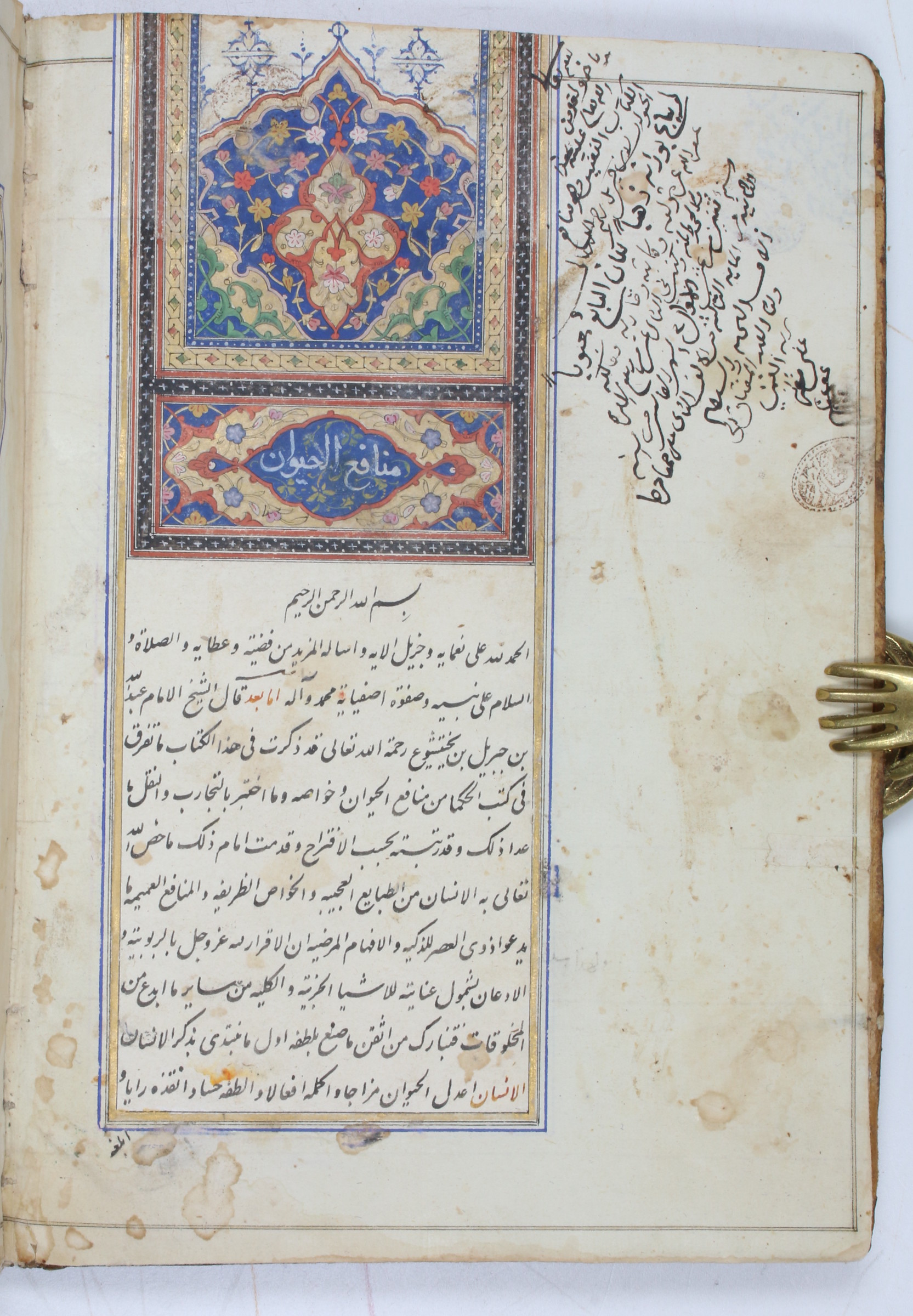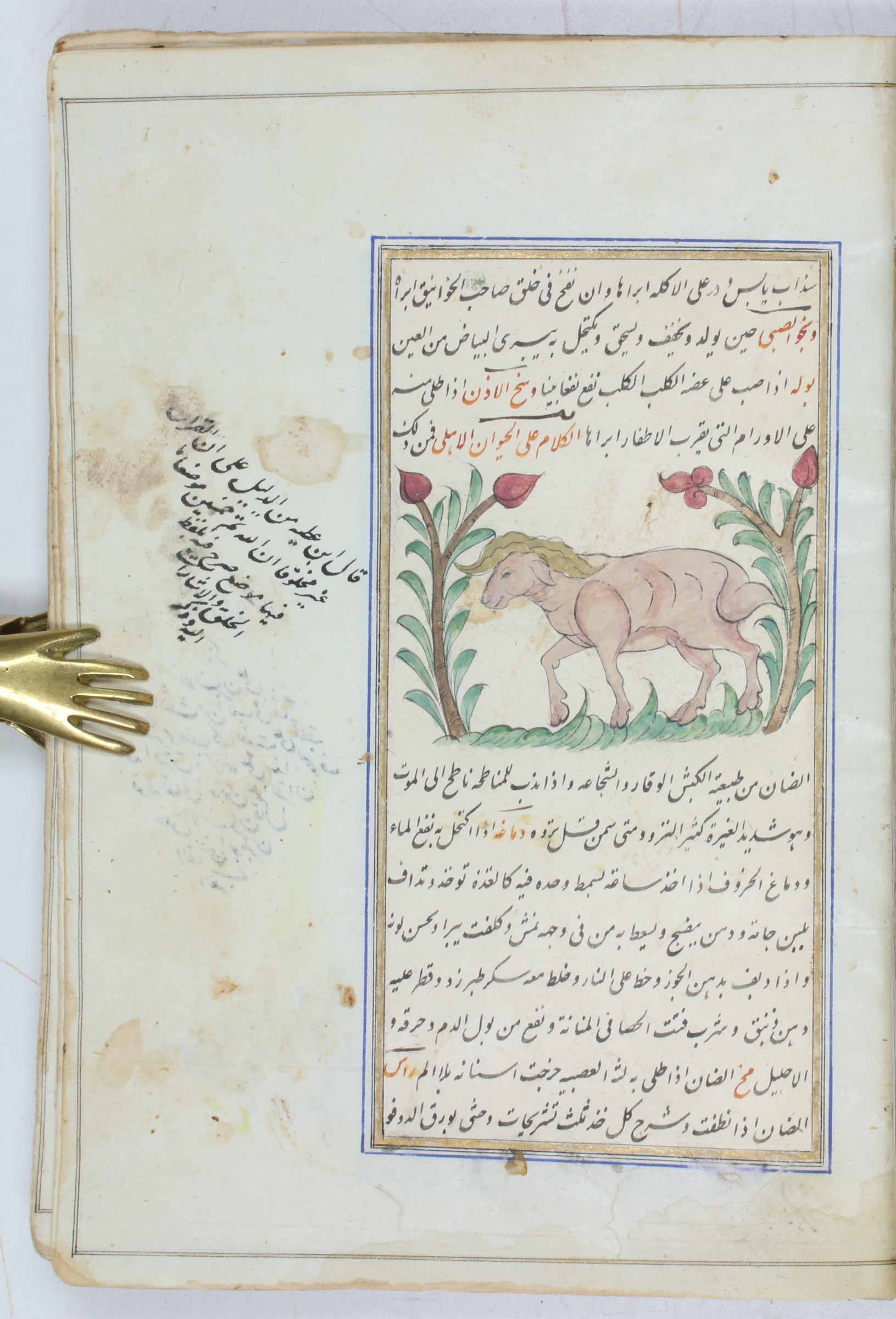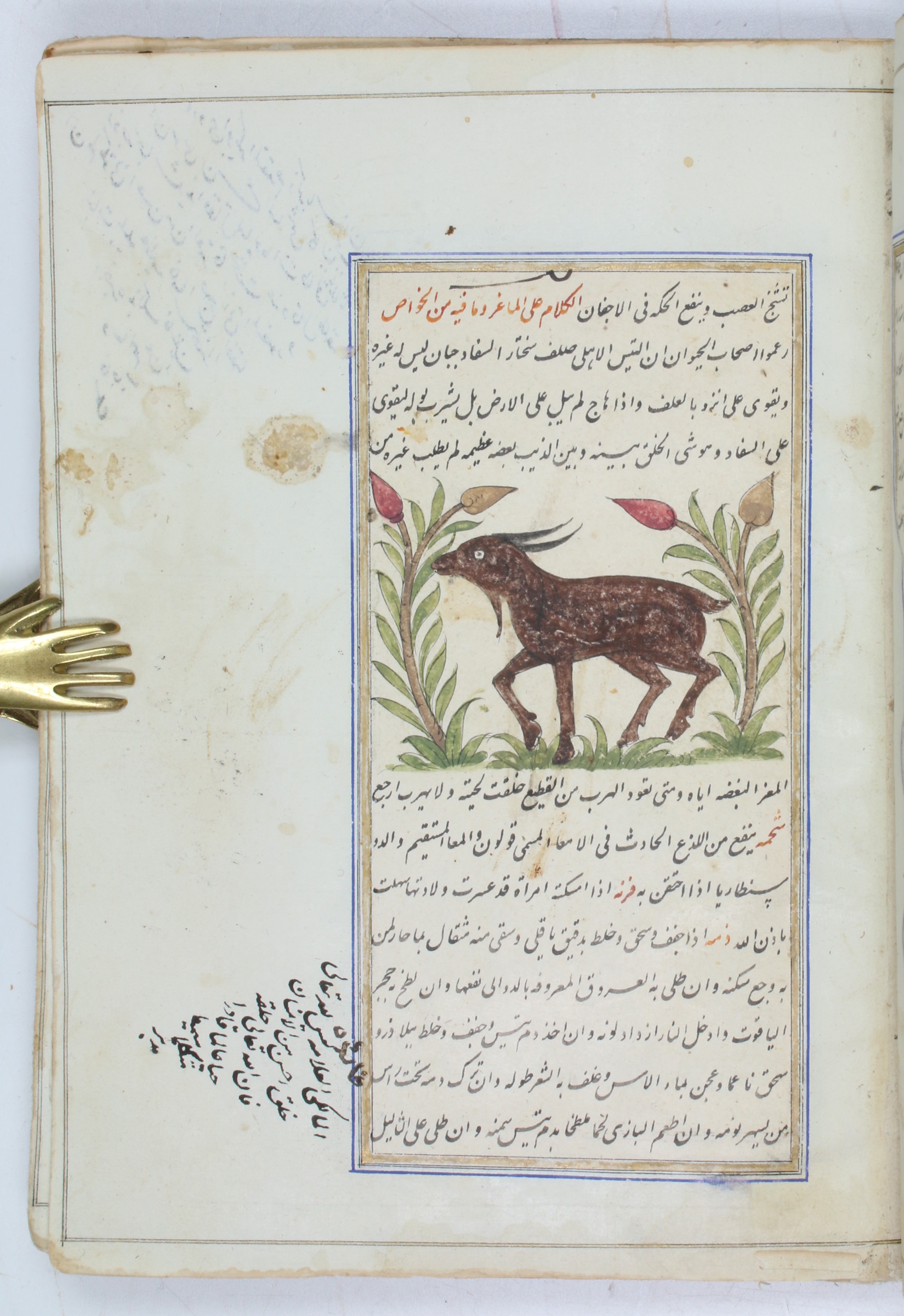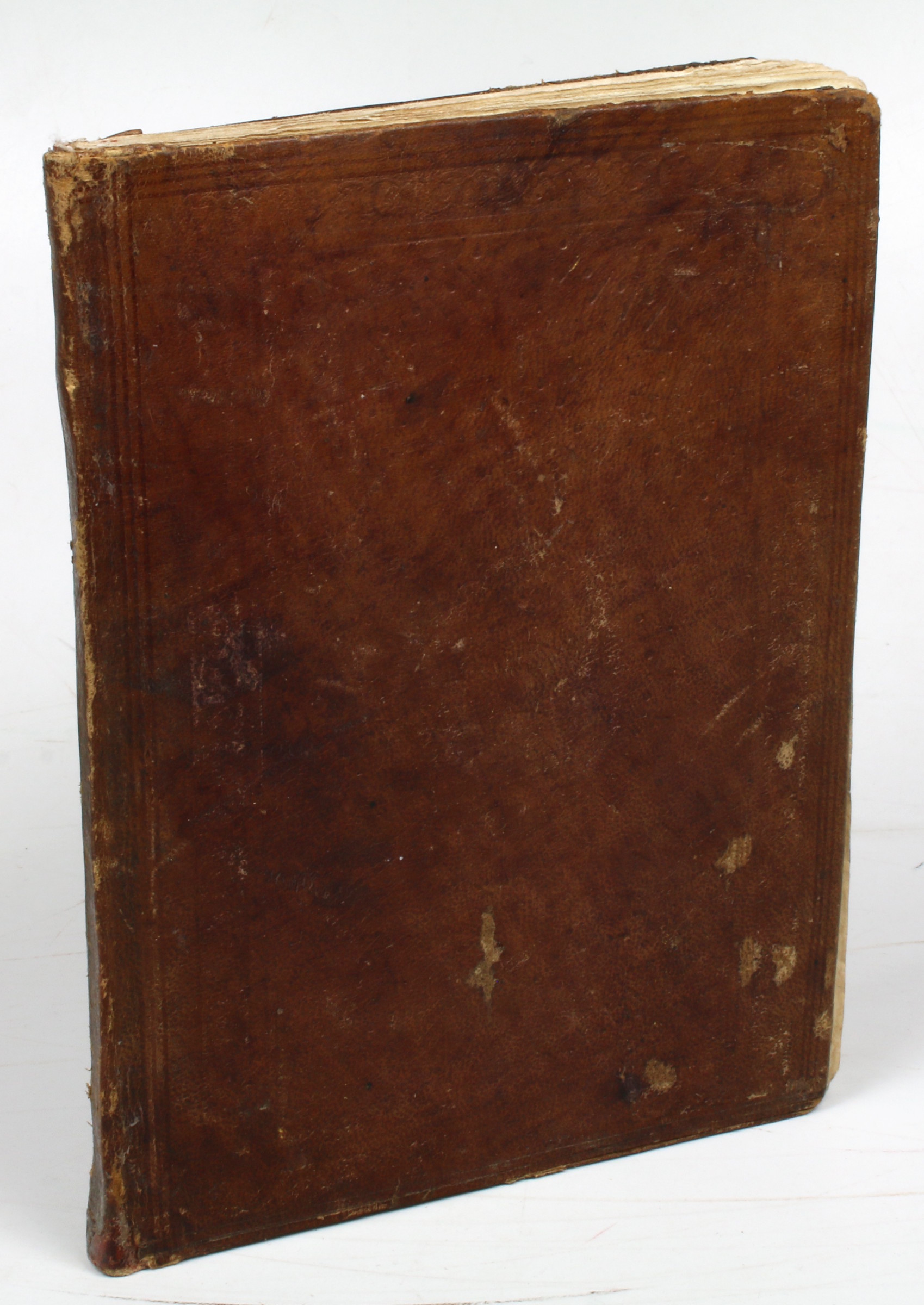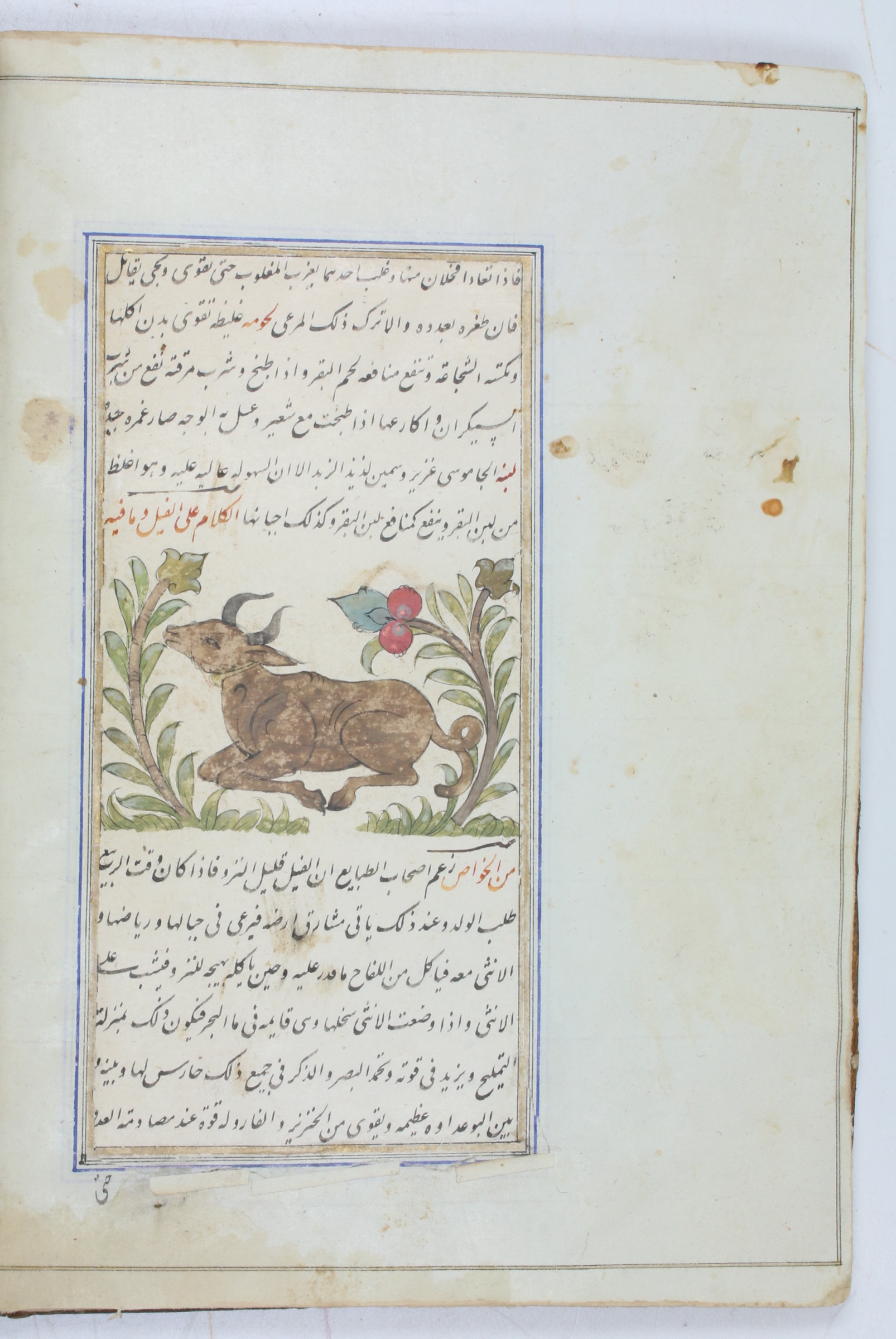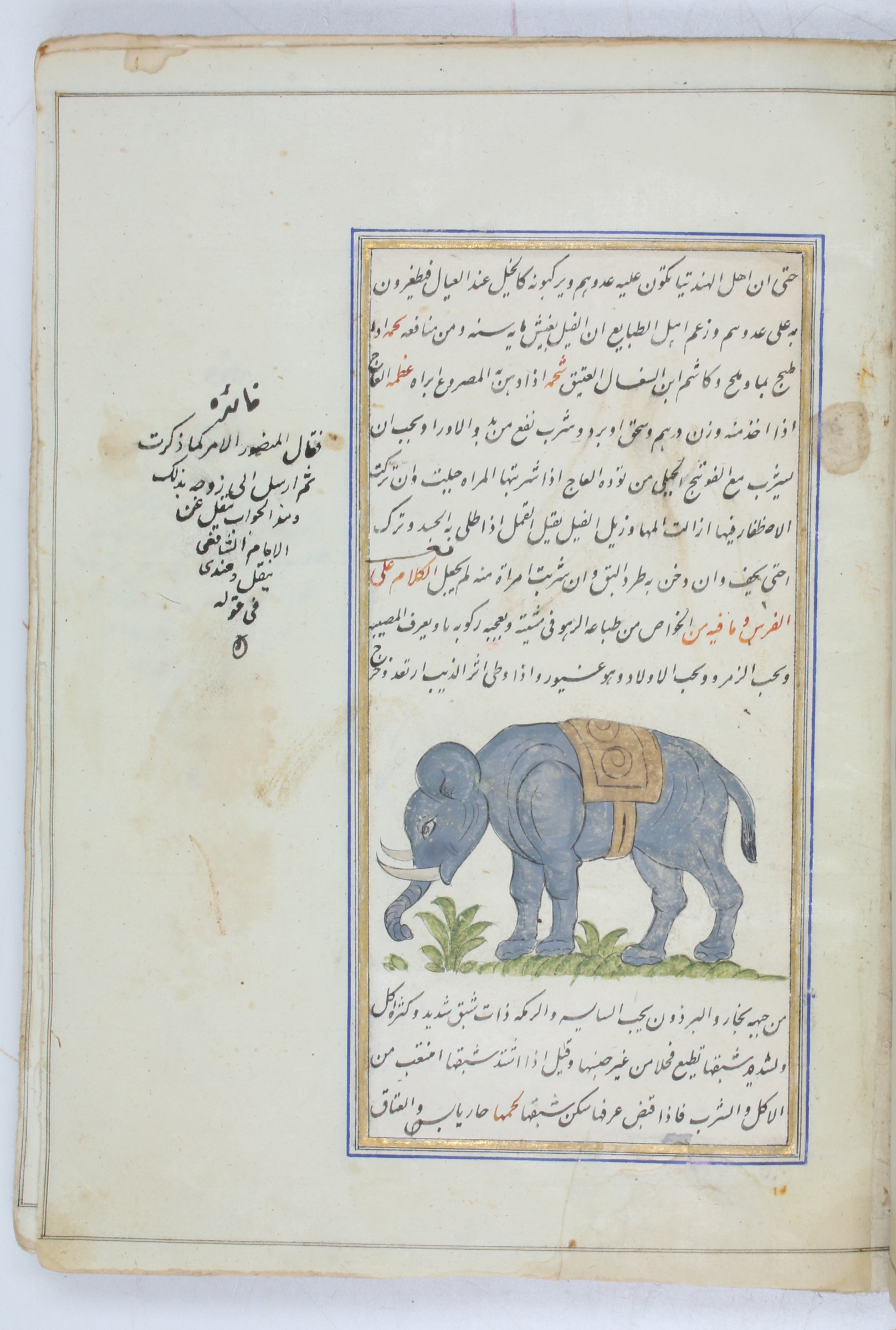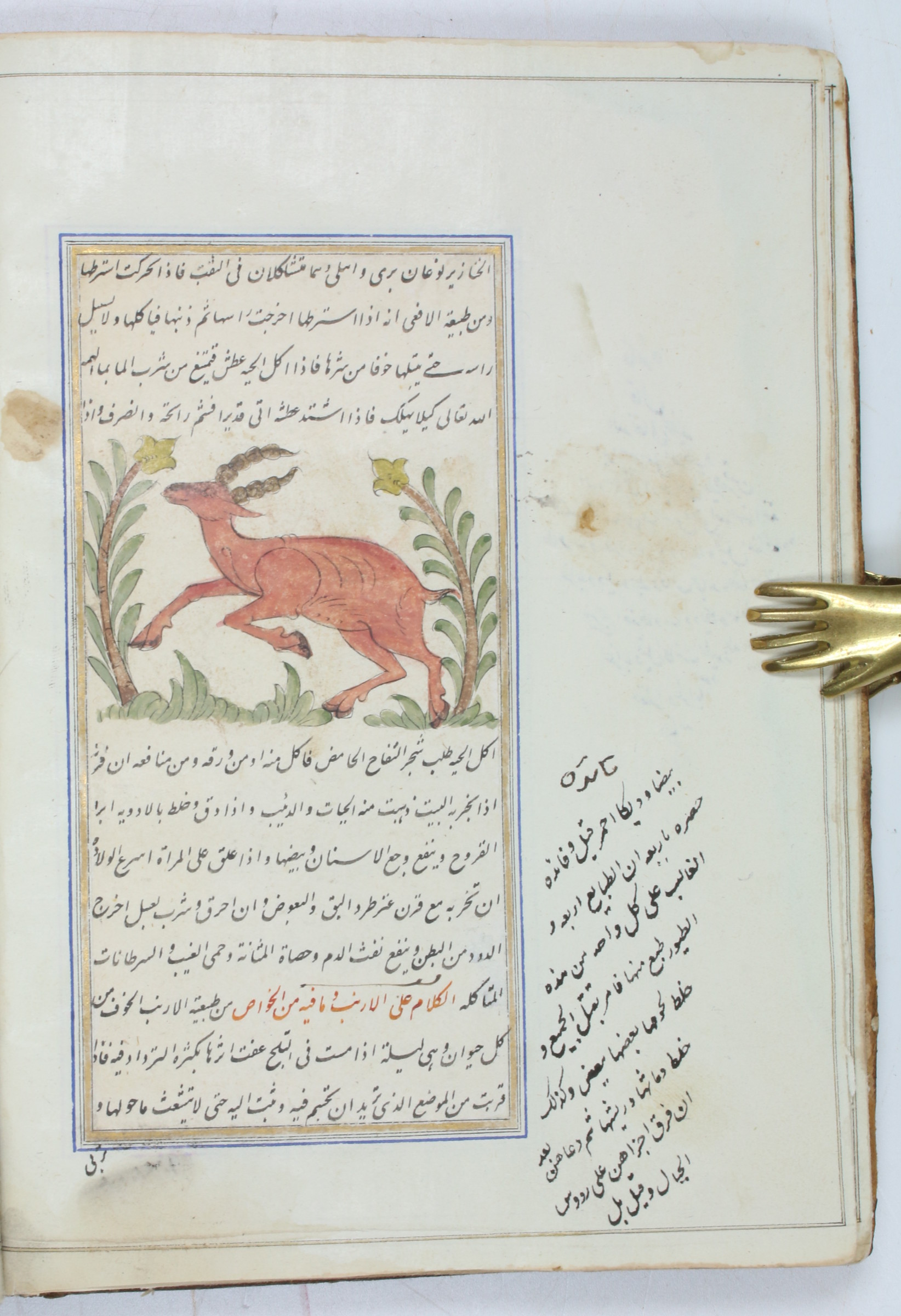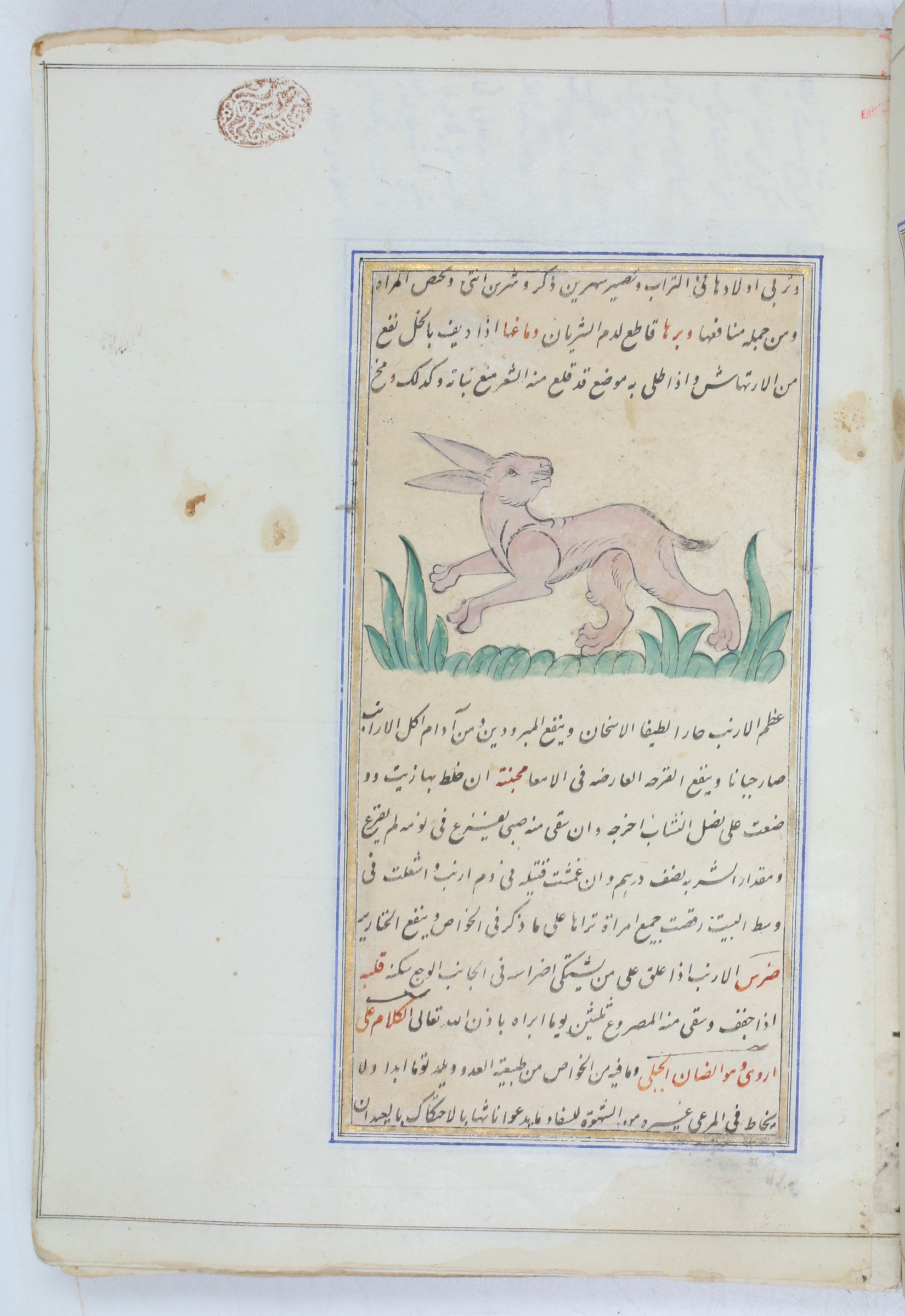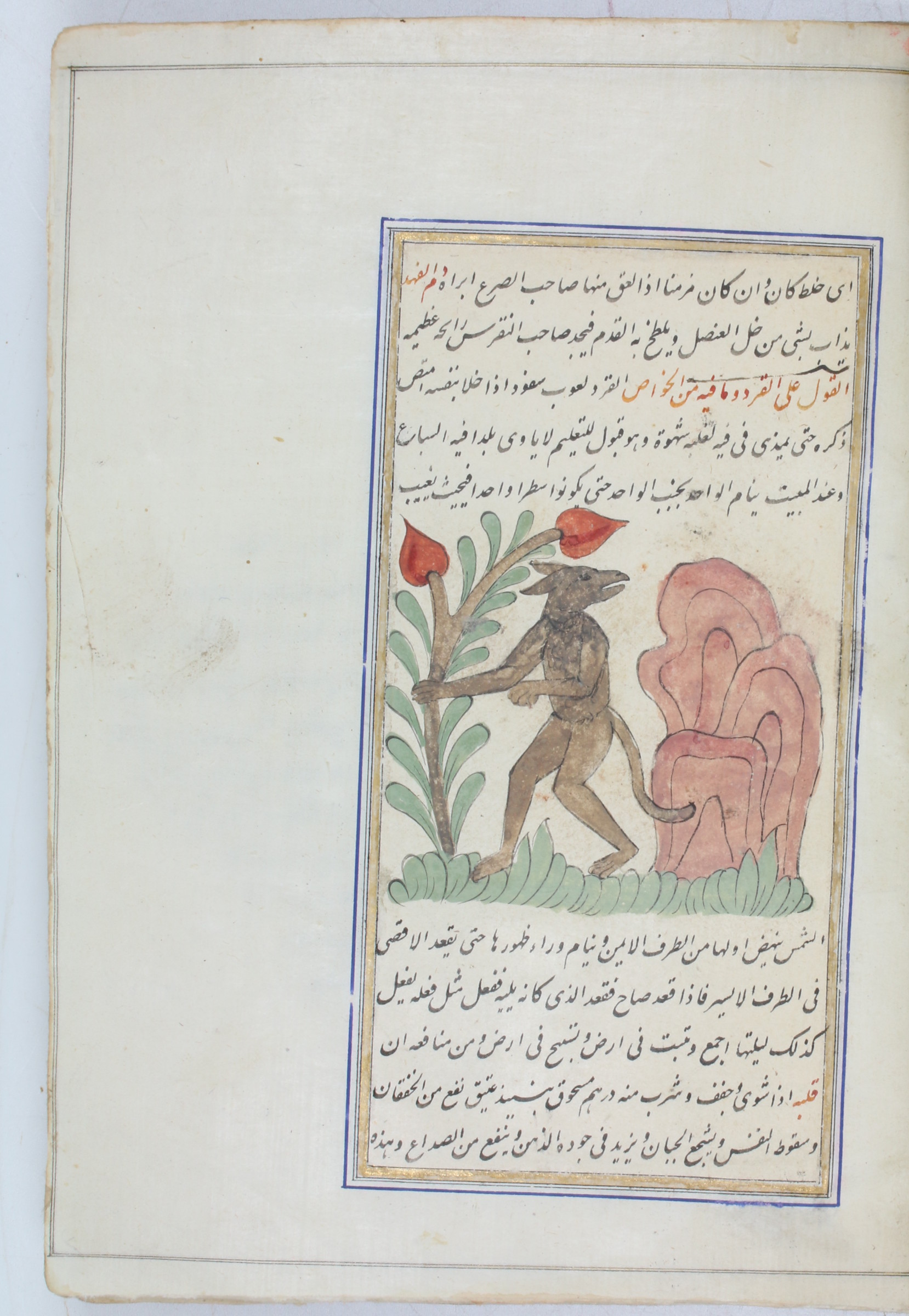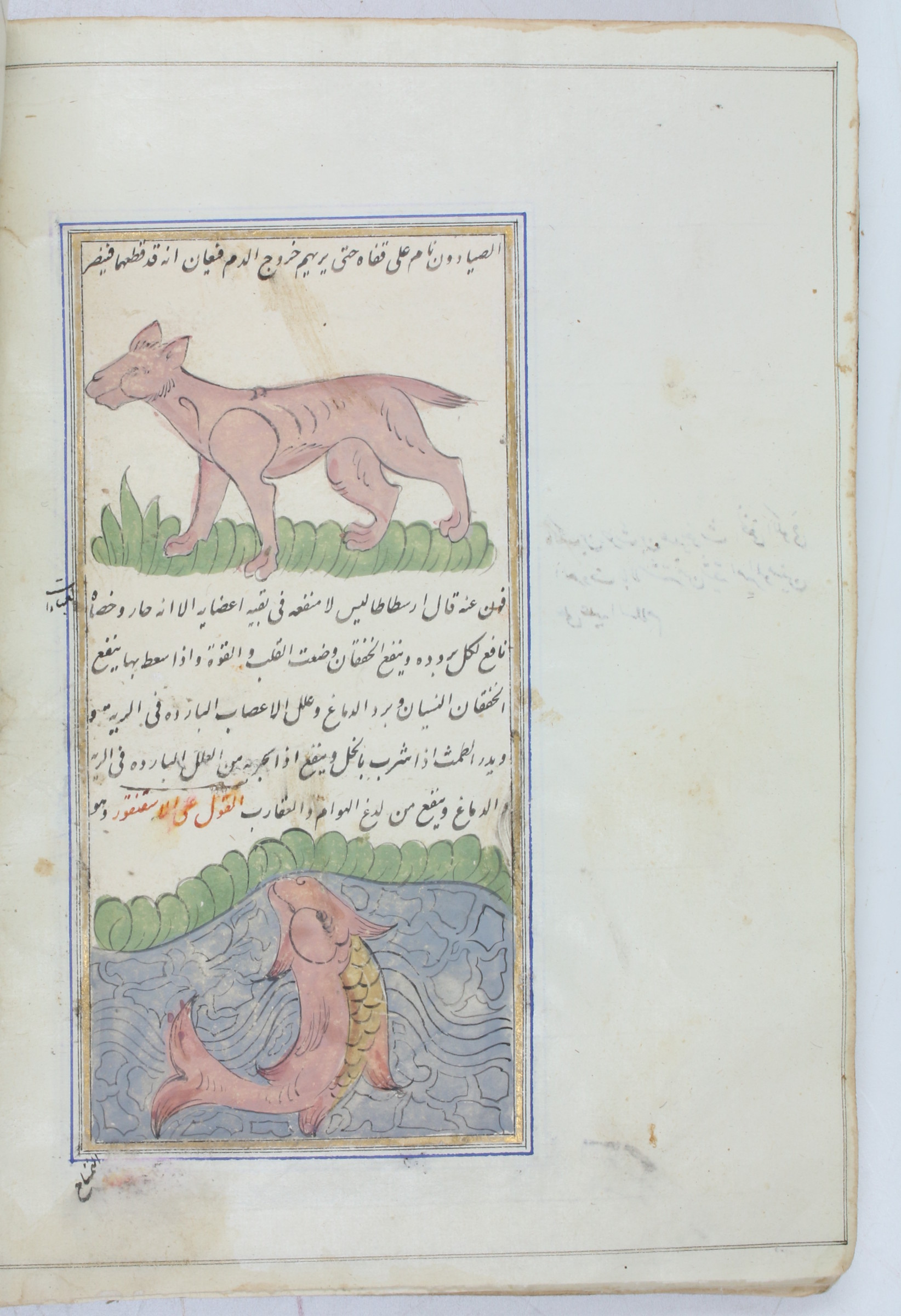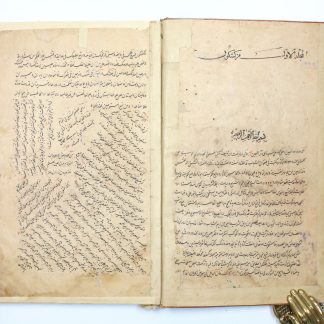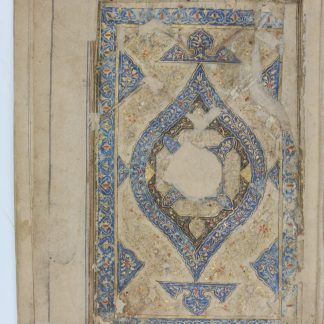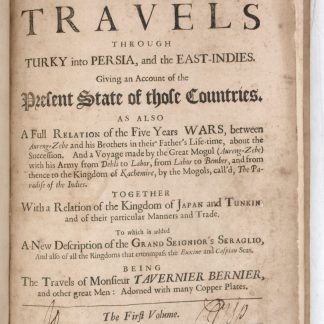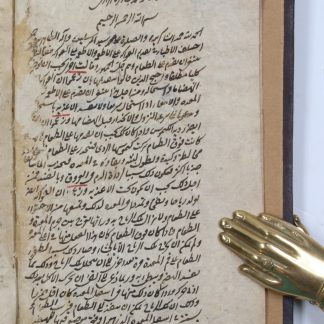Rare Arabic original text
Manafi' al-hayawan [On the Usefulness of Animals].
4to (150 x 205 mm). 34 leaves. Arabic manuscript on polished cream coloured paper, 18 lines in black and occasional red ink, written space of 71 x 145 mm set within gilt jadval borders, black and blue rules, mounted within larger leaves; several marginal glosses. With a finely illuminated 'unwan headpiece in polychrome and gilt and 71 gouache illustrations. Bound within full brown morocco with blindstamped cover designs.
Very prettily illustrated treatise on "the benefits of animals" composed in the 10th century by the Nestorian Abu Sa'id ibn Bakhtishu for the Abbasid Caliph al-Muttaqi (ruled 940-944), forming part of his larger work "Kitab al-Hawass mujarrab al-manafi'" (cf. Brockelmann). Derived from Aristotelian sources, it deals with the physical characteristics and organs of animals. The text was translated into Persian for the Ilkhanid ruler Ghazan Khan (reigned 1295-1304), and the Persian version is much more common than the Arabic original, preserved here. This early manuscript comprises the first of the work's four discourses ("moqâla"). The detailed colour illustrations include various antlered animals, a goat, a cow, an elephant, a hare, a lion, a horse, a bear, a leopard, a rhinoceros, several fish (including an amphibious species), numerous birds, crabs, frogs, and insects. The colophon states this manuscript was copied by Abd al-Majid al-Kasi, in Medina, from an earlier one dated AH 700 (1300 CE).
Abu Said 'Ubaidallah ibn Gibril ibn Bakhtishu (Bukhtyashu, Bohtyesu) was the last representative of a famous family of Nestorian physicians who had emigrated from Jundishapur to Baghdad in the eighth century. He is also known as the author of a manual dealing with philosophical terms used in medicine and of a treatise on lovesickness.
Treasured for their illustrations, manuscripts of "Manafi' al-hayawan" were often cut up and dispersed, and complete volumes such as this one are rare. A few individual sheets from the Middle Ages are kept in the Metropolitan Museum of Art, New York (inv. 18.26.2 & 55.121.41), the Harvard Art Museum (inv. no. 1960.205), the Cleveland Museum of Art (inv. no. 1945.382.a), the Freer Gallery (inv. no. F1928.7), and the Pierpont Morgan Library, New York (M500).
GAL I 483 (637).

